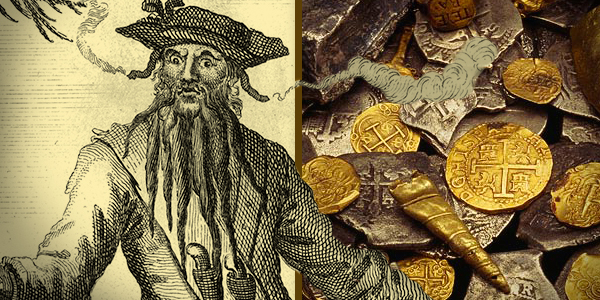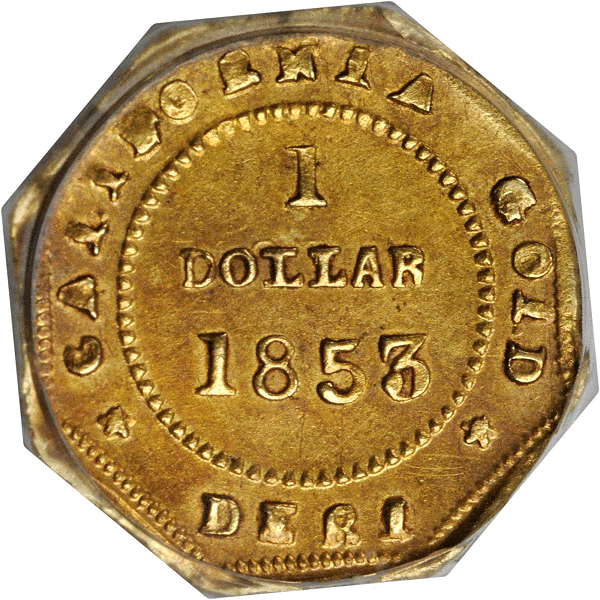
By Frank Van Valen – Numismatist and Cataloger, Stack’s Bowers Galleries ……
We all, or at least many of us, wanted to be pirates when we were kids.
Swashbucklers all, we watched the antics of Errol Flynn on Saturday morning black and white television and thrilled to the adventures of such denizens of the “bounding main” as Flynn’s portrayal of Captain Blood.
We knew all about pirate captains such as Blackbeard, Bluebeard, and even Redbeard, and we learned about the exciting life of a pirate through such clever tales as Treasure Island by Robert Louis Stevenson.
This was in a more tender age when no kid I knew wanted to be an investment banker or a lowly politician; we all had loftier dreams.
After a certain age the lore and lure of pirates was put on back burners as girls and school and a million other things took precedence over Saturday morning television flights of fancy. In my case, I discovered numismatics in 1961 at the age of 11 (I discovered girls at about the same time, but I never let a girlfriend question why I looked through my pocket change for coins to fill my Whitman folders).
Over the decades in my professional capacity as a catalog writer I have had the opportunity to catalog some of the finest collections ever assembled of California Small Denomination or Fractional gold coins, including the Texas Collection and the Jay Roe Collection.
 Whenever a collection of California Fractional gold coins appears for auction there is included, more often than not, a group of California “charms” that closely resemble California Fractional pieces–but there the similarities stop. These charms are dated typically in the Gold Rush era though they were produced late in the 19th and early to mid-20th centuries. Most importantly, however, was the fact that they had no denomination such as CENTS or DOLLAR as found on the genuine pieces.
Whenever a collection of California Fractional gold coins appears for auction there is included, more often than not, a group of California “charms” that closely resemble California Fractional pieces–but there the similarities stop. These charms are dated typically in the Gold Rush era though they were produced late in the 19th and early to mid-20th centuries. Most importantly, however, was the fact that they had no denomination such as CENTS or DOLLAR as found on the genuine pieces.
I often wondered how these little charms, far more numerous than the genuine California pieces, made it into so many collections. How were they distributed? Were they for sale by jewelers who produced them to demonstrate engraving skills? Did they sell at coin shows? How much did they cost when new? Were they available to firms for promotional gimmicks?
A recent find on an Internet bidding site partly answered some of my long-time queries.
My latest exonumia purchase is a small 3.5 inch X 2.25 inch manila envelope with a depiction of a pirate on a tropical shore opening a treasure chest. THE / PIRATES TREASURE / PRIZE SET appears in boldface letters above the beach scene on three lines. To the right of the pirate the envelope reads CONTAINS / $1/4 & $½ SIZE / SOUVENIR / CALIFORNIA GOLD / COINS / RETAILS FOR 77C on six lines. The contents, all Mint State, include an “1856” Liberty Head Round 25C, an “1852” Liberty Head Round 50C, an “1852” Indian Head Octagonal 25C, and an 1856 Indian head Octagonal 50C. All are nicely toned and fully brilliant, the toning no doubt from the glassine envelope inside the manila holder.
Who made these particular charms is unknown to me, but the packaging must have caught the eye of many youngsters back when offered. It sure caught my adult eye and I couldn’t wait to add this Pirates Treasure of California Gold charms to my collection.
I wonder, how many kids paid 77C for the honor of owning one of these pirate packages?
Here in 2016, I had to pay $10, postage included, and I would pay that amount over and over again for more pirate treasure California Fractional charms.




